Choisir vos premiers skis ne doit pas être compliqué. Voici ce que vous devez savoir dès le départ pour commencer rapidement et en toute confiance :
- Skis courts (moins de 160 cm) sont plus faciles à contrôler, parfaits pour les débutants, et moins fatigants à utiliser.
- Les skis longs (plus de 170 cm) offrent de la stabilité à grande vitesse mais sont plus difficiles à manœuvrer pour les skieurs débutants.
- Snowfeet skis courts sont compacts, adaptés aux débutants, et fonctionnent avec des chaussures d'hiver classiques ou des boots de snowboard, ce qui en fait un choix pratique pour les novices.
- Considérations clés : Adaptez la longueur des skis à votre taille, poids et niveau de compétence. Les skis plus courts sont idéaux pour apprendre les virages de base et gagner en confiance.
Comparaison rapide : Skis courts vs. Skis longs vs. Snowfeet
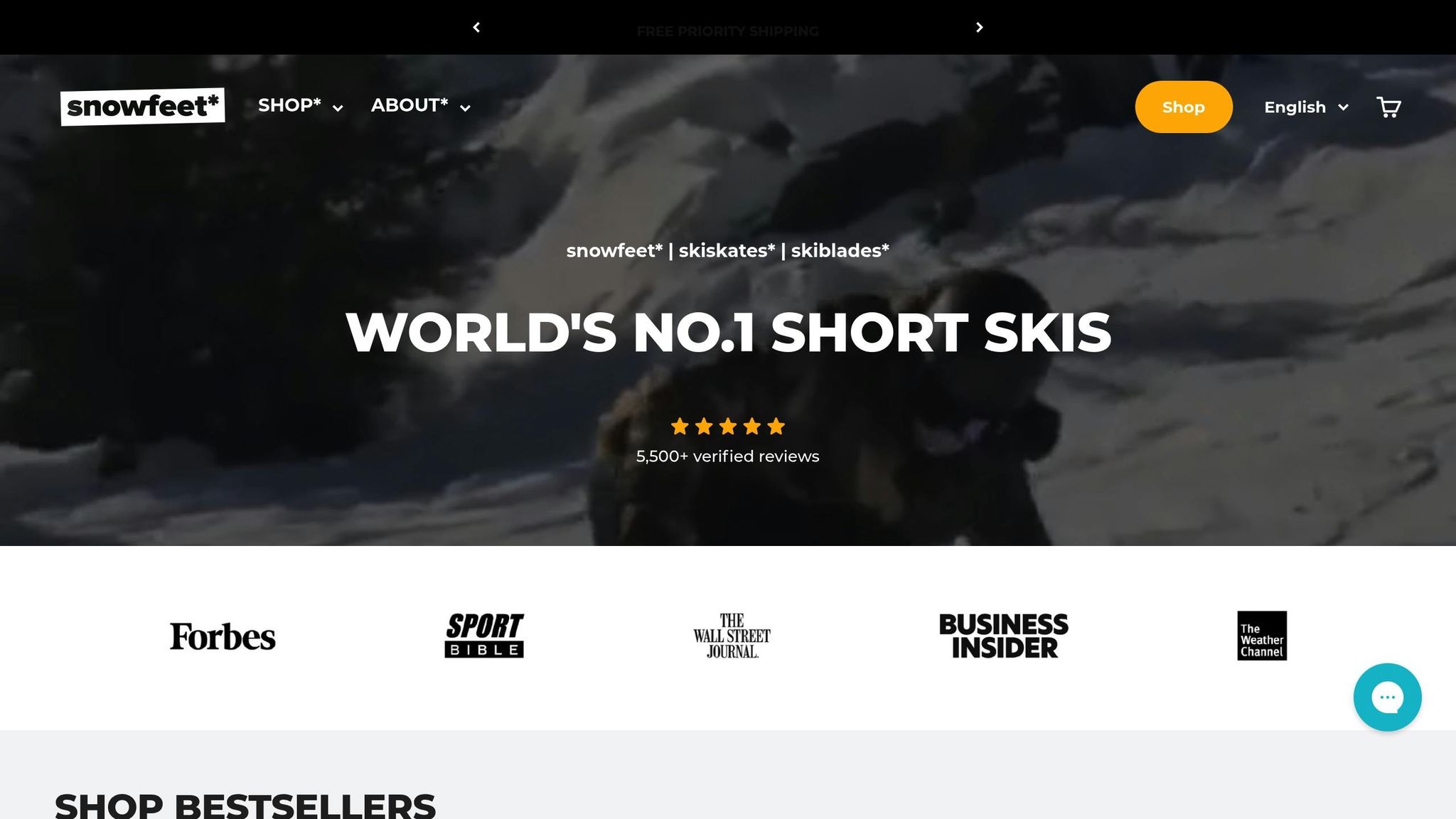
| Caractéristique | Skis courts | Skis longs | Snowfeet |
|---|---|---|---|
| Contrôle | Facile | Plus difficile pour les débutants | Le plus facile (comme le patinage) |
| Poids | Léger | Lourd | Ultra-léger |
| Terrain | Polyvalent | Idéal pour pistes avancées | Pistes damées, snowparks |
| Chaussures | Chaussures de ski requises | Chaussures de ski requises | Chaussures/bottes d'hiver |
| Portabilité | Modérément portable | Encombrant, nécessite un porte-bagages de toit | Se range dans un sac à dos |
| Fourchette de prix | 300 $–800 $+ | 300 $–800 $+ | $150–$690 |
Astuce de pro : Commencez avec des skis plus courts ou des modèles Snowfeet pour faciliter et rendre l'apprentissage plus amusant. Une fois prêt pour plus de vitesse et des techniques avancées, vous pourrez explorer les skis plus longs.
Comment acheter les MEILLEURS skis pour débutants adaptés à vous | Guides d'équipement | Sélectionné
Types de skis : Skis longs vs Skis courts
Lorsque vous vous préparez à acheter vos premiers skis, vous remarquerez rapidement deux options principales sur les rayons : les skis longs traditionnels et les Skiskates courts de plus en plus populaires. Connaître les différences entre les deux peut vous aider à choisir la bonne paire selon votre style de ski et votre niveau.
Skis longs : caractéristiques et défis
Les skis longs, proposés par des marques renommées comme Rossignol, Atomic, Head, et Elan, mesurent généralement plus de 67 pouces (170 cm). Ces skis sont depuis des années le choix privilégié des skieurs avancés, grâce à leurs performances dans des conditions spécifiques.
Qu'est-ce qui distingue les skis longs ? Pour commencer, ils offrent une stabilité exceptionnelle à grande vitesse et une excellente accroche sur la neige dure. Cela en fait un choix solide pour les skieurs affrontant des pentes raides ou un terrain difficile. Leur plus grande surface les rend également excellents pour flotter dans la poudreuse profonde, ce pourquoi les passionnés de hors-piste les recommandent souvent.
Cela dit, les skis longs ne sont pas vraiment adaptés aux débutants. Ils sont plus lourds, plus difficiles à contrôler et demandent plus d'effort pour manœuvrer, ce qui peut être frustrant pour un novice. Leur longueur supplémentaire crée aussi une traînée à basse vitesse, les rendant lourds pour ceux qui maîtrisent encore leurs virages. Et si vous faites une erreur - comme accrocher un bord ou perdre l'équilibre - se redresser est plus compliqué avec des skis longs. Ils nécessitent aussi plus d'espace pour tourner, ce qui peut être délicat sur des pistes bondées ou des sentiers étroits.
Alors que les skis longs sont fantastiques pour les skieurs expérimentés, les débutants peuvent les trouver plus difficiles qu'ils n'en valent la peine.
Skis courts : le meilleur allié du débutant
Les skis courts, généralement sous 63 pouces (160 cm), offrent une expérience complètement différente. Des entreprises comme Snowfeet* ont poussé ce concept plus loin, avec des options allant des Mini Ski Skates compacts de 15 pouces (38 cm) aux skis courts plus traditionnels de 120 cm.
Pourquoi les skis courts sont-ils un excellent choix pour les nouveaux skieurs ? D'abord, ils sont beaucoup plus faciles à contrôler. Leur longueur réduite permet des virages rapides et précis, parfaits pour naviguer sur des pentes étroites ou sinueuses. Ils sont aussi légers, ce qui réduit la fatigue et vous aide à garder un meilleur équilibre. Cela rend l'apprentissage des bases moins fatigant et plus amusant.
Les skis courts brillent par leur polyvalence. Alors que les skis longs sont adaptés à des conditions spécifiques, les skis courts performent bien sur une variété de terrains. Ils gèrent aisément les pistes damées, les zones hors-piste douces et même les snowparks. Les skieurs freestyle les adorent pour leurs transitions rapides et leurs mouvements dynamiques.
Snowfeet* a même lancé des modèles ultra-courts, comme leurs modèles de 15 pouces (38 cm), qui donnent l'impression de skier comme on patine. Ces options remettent en question l'idée traditionnelle que les skis plus longs sont toujours meilleurs, en se concentrant plutôt sur ce qui fonctionne pour les débutants et les skieurs récréatifs.
Ensuite, nous allons explorer comment choisir les skis courts parfaits pour votre niveau et le terrain que vous comptez explorer.
Ce qu'il faut prendre en compte pour choisir vos premiers skis
Choisir votre première paire de skis est un moment important. Le bon choix peut vous garantir un début amusant et confiant sur les pistes. Décomposons les points clés à considérer avant d'acheter.
Terrain et objectifs de ski
Réfléchissez à l'endroit où vous allez skier et au type d'expérience que vous recherchez. Les experts soulignent que votre style de ski joue un rôle important dans le choix des skis adaptés. Pour la plupart des débutants, les all-mountain skis sont un choix sûr. Ils sont conçus pour gérer une variété de terrains, des pistes damées à la poudreuse légère et même les bosses. Si vous débutez, des all-mountain skis plus courts comme les modèles 47 pouces (120 cm) ou 39 pouces (99 cm) de Snowfeet* sont une excellente option. Ils sont plus faciles à contrôler et moins intimidants que les skis plus longs, ce qui les rend idéaux pour explorer les pistes damées ou les zones hors-piste douces.
Vous aimez l'idée du ski freestyle ou de dévaler le snowpark ? Les skis plus courts brillent aussi ici. Les skis freestyle sont plus légers et plus flexibles, parfaits pour les figures et les modules du park. Les modèles 26 pouces (65 cm) de Snowfeet* sont particulièrement agiles, ce qui facilite l'expérimentation de mouvements créatifs comparé aux skis longs traditionnels de marques comme Head ou Elan.
À l'inverse, il vaut mieux éviter les skis de course si vous débutez en ski. Ils sont rigides, très réactifs, et conçus pour des skieurs expérimentés capables de gérer leurs performances agressives. Donc, optez pour des options adaptées aux débutants et considérez ensuite la longueur du ski.
Longueur de ski et niveau de compétence
La longueur du ski est un autre facteur crucial. La vieille règle dit que les skis doivent atteindre entre votre menton et le sommet de votre tête. Bien que les skis plus longs offrent plus de stabilité à grande vitesse, ils sont moins indulgents pour les débutants. Les skis plus courts, en revanche, facilitent les virages et aident à gagner en confiance.
Snowfeet* bouleverse les règles traditionnelles de taille. Leurs skis de 26 pouces (65 cm), par exemple, atteignent généralement la taille chez la plupart des adultes. Cette longueur plus courte se traduit par un meilleur contrôle et un apprentissage plus rapide. Comparez cela à un ski débutant typique de marques comme Atomic ou Head, qui mesure souvent plus de 67 pouces (170+ cm) - une longueur qui peut sembler encombrante pour un novice.
Bien sûr, il y a un compromis : les skis plus courts sont plus faciles à manier mais un peu moins stables à haute vitesse. Pour les débutants, cependant, le contrôle accru compense largement cet inconvénient puisque vous n'êtes probablement pas encore en train de dévaler la montagne à toute vitesse.
Voici un aperçu rapide de la façon dont les skis Snowfeet* se comparent aux tailles de skis traditionnels :
| Taille | Longueur de ski traditionnelle | Snowfeet* 120cm | Snowfeet* 99cm | Snowfeet* 65cm |
|---|---|---|---|---|
| 5'4" (163 cm) | 59–67" (150–170 cm) | 47" (120 cm) | 39" (99 cm) | 26" (65 cm) |
| 5'8" (173 cm) | 63–71" (160–180 cm) | 47" (120 cm) | 39" (99 cm) | 26" (65 cm) |
| 6'0" (183 cm) | 67–75" (170–190 cm) | 47" (120 cm) | 39" (99 cm) | 26" (65 cm) |
Ce tableau met en lumière comment les skis Snowfeet* s'adaptent à une gamme de tailles, offrant une flexibilité que les skis traditionnels n'ont peut-être pas. Une fois que vous avez choisi la bonne taille, pensez à la facilité de transport et de stockage de vos skis.
Portabilité et rangement
Pour les débutants, la portabilité et le rangement sont souvent négligés mais super importants. Les skis traditionnels de marques comme Rossignol ou Head peuvent être longs et lourds, ce qui les rend difficiles à transporter et à stocker.
Snowfeet* a relevé ces défis avec leurs designs compacts et légers. Leurs skis plus courts s'adaptent facilement à la plupart des voitures - pas besoin de porte-skis volumineux sur le toit. Ils sont aussi parfaits pour les petits appartements, glissant aisément sous les lits ou dans les placards. Par exemple, les modèles de 26 pouces (65 cm) peuvent même tenir dans de grands sacs de sport, rendant les voyages en avion très faciles.
Si vous vivez en ville ou n'avez pas de garage, ce design compact change la donne. Alors que les skis traditionnels nécessitent souvent des supports au plafond ou des fixations murales, les modèles Snowfeet* fonctionnent avec des systèmes de rangement polyvalents ou des étagères réglables.
Le poids est un autre facteur. Porter des skis lourds dans les escaliers, à travers les parkings ou sur les bases des stations peut être épuisant avant même de commencer à skier. Les skis légers de Snowfeet* réduisent cette contrainte, vous laissant plus d'énergie pour profiter des pistes.
Pour les voyageurs, ces skis se marient bien avec des sangles de ski réglables, ce qui facilite leur rangement dans des espaces restreints sans avoir besoin de bagages surdimensionnés. Cette portabilité rend plus simple l'engagement à skier régulièrement sans les tracas habituels de stockage.
Short Skis vs. Skis longs vs. Snowboards
En matière de sports d'hiver, choisir le bon équipement peut faire toute la différence. Décomposons comment les Snowfeet* short skis se comparent aux skis longs traditionnels et aux snowboards, surtout pour les débutants.
Tableau comparatif : Snowfeet* vs. Skis longs et Snowboards
Voici un aperçu côte à côte de la façon dont ces options se comparent sur des facteurs clés :
| Facteur | Snowfeet* Short Skis | Skis longs traditionnels | Snowboards |
|---|---|---|---|
| Courbe d'apprentissage | Facile – similaire au patinage | Modéré à difficile | Apprentissage initial raide |
| Chaussures requises | Chaussures d'hiver ou chaussures de snowboard | Chaussures de ski spécialisées (souvent coûteuses) | Chaussures de snowboard |
| Fourchette de prix | $150–$690 | $300–$800+ (hors chaussures) | $200–$600+ (hors chaussures) |
| Portabilité | Se range dans un sac à dos | Nécessite un porte-toit ou un sac long | Encombrant mais gérable |
| Espace de rangement | Minimal – se glisse sous un lit ou dans un placard | Nécessite un rangement mural ou au plafond | Nécessite un espace modéré |
| Polyvalence du terrain | Parfait pour les pistes, les parks, les sentiers de randonnée et les jardins | Idéal pour les pistes | Idéal pour les pistes et les parks |
| Maniabilité | Très agile, virages rapides | Moins agile, demande plus d'effort | Bon pour le carving |
| Contrôle de la vitesse | Plus facile pour les débutants | Plus difficile au début | Prend du temps pour maîtriser le contrôle des carres |
| Tricks & Freestyle | Parfait pour les rotations et les sauts | Options limitées pour les débutants | Mieux une fois les compétences améliorées |
Pourquoi Snowfeet* Brille
Le tableau met en lumière certains avantages clairs, mais explorons pourquoi Snowfeet* se démarque pour les nouveaux skieurs :
- Flexibilité des Chaussures : Contrairement aux skis traditionnels qui exigent des bottes spécialisées coûteuses, Snowfeet* fonctionnent avec des chaussures d'hiver ordinaires ou des bottes de snowboard. C'est un grand avantage pour la commodité et les économies.
-
Portabilité : Oubliez les barres de toit ou le transport d'équipement lourd. Snowfeet* sont si compacts qu'ils tiennent directement dans votre sac à dos. Comme l'a dit un utilisateur :
"Avec ces petits skis, vous vous sentez beaucoup plus agile, plus rapide, et surtout – à l'aise. Pas de boucles, pas de bottes lourdes – il suffit d'attacher et de partir."
- Options de Terrain : Alors que les skis longs et les snowboards sont principalement limités aux pistes damées, Snowfeet* ouvrent un monde de possibilités. Emmenez-les sur des sentiers de randonnée, des collines à luge, ou même dans votre jardin.
-
Conception Adaptée aux Débutants : Snowfeet* sont conçus pour les novices. Leur longueur plus courte les rend plus faciles à contrôler et à tourner, ce qui signifie moins de frustration et plus de plaisir. Comme l'équipe Snowfeet l'explique :
"Les skis plus courts sont généralement plus faciles pour les débutants car ils sont plus faciles à contrôler et à tourner. Les skis plus longs conviennent mieux aux skieurs plus expérimentés car ils offrent plus de stabilité et de vitesse. Donc, si vous débutez, optez pour des skis plus courts."
- Maniabilité Facile : Leur design agile permet des virages rapides avec moins d'effort, aidant les débutants à gagner en confiance plus rapidement.
-
Clients satisfaits : Avec une note de 4,9/5 donnée par plus de 5 500 utilisateurs, Snowfeet* comptent de nombreux fans. Comme l'a partagé Andrew B. :
"Je ne reviendrai jamais aux skis originaux."
Pour ceux qui s'aventurent pour la première fois dans les sports d'hiver, Snowfeet* offrent une option pratique, amusante et adaptée aux débutants, difficile à surpasser.
sbb-itb-17ade95
Meilleurs produits Snowfeet* pour débutants
Jetons un coup d'œil aux meilleurs modèles Snowfeet* pour débutants. Si vous êtes nouveau dans les sports d'hiver, ces produits offrent une manière plus facile et accessible de dévaler les pistes comparé aux skis ou snowboards traditionnels.
Meilleurs modèles pour les nouveaux skieurs
Snowfeet* Mini Ski Skates (38 cm) – À partir de 150 $
Ces skates ultra-compacts sont parfaits pour les débutants. Ils sont légers, faciles à contrôler, et donnent l'impression d'une extension naturelle de vos pieds. Ils sont parfaits pour les pentes douces, les snowparks ou les séances d'entraînement décontractées, ce qui en fait un excellent choix pour gagner en confiance dès le départ.
Skiskates (44 cm) – À partir de 390 $
Un cran au-dessus en stabilité et polyvalence, ils possèdent un noyau en bois qui améliore le contrôle des carres. Ils sont idéaux si vous vous voyez passer plus de temps sur les pistes et souhaitez un équipement qui évolue avec vos compétences.
Skiblades (65 cm) – À partir de 450 $
Pour ceux qui recherchent une sensation de ski plus traditionnelle, les Skiblades répondent parfaitement. Ils sont stables, excellents pour le carving, et performants dans les snowparks. Leur longueur plus importante en fait une option solide à long terme à mesure que vous progressez.
Comment choisir le bon modèle Snowfeet*
Choisir le bon modèle dépend de quelques facteurs clés. Voici un guide rapide pour vous aider à décider :
Votre morphologie
Si vous êtes plus grand ou plus lourd, vous trouverez peut-être les Skiblades plus longues plus stables et plus faciles à contrôler. Les modèles plus courts, comme les Mini Ski Skates, demandent moins d'effort pour tourner, ce qui peut être d'une grande aide quand vous débutez.
Préférences de terrain
Pensez à l'endroit où vous allez skier. Sur les pistes damées des stations, les Skiblades brillent par leur capacité de carving et leur contrôle de la vitesse. Si vous explorez un terrain varié, les Mini Ski Skates offrent plus de flexibilité.
Compatibilité des chaussures
Tous les modèles Snowfeet* fonctionnent avec des chaussures d’hiver classiques ou des bottes de snowboard. Si vous prévoyez d’utiliser des chaussures d’hiver, les Mini Ski Skates offrent une sensation plus naturelle et adaptée aux débutants.
Objectifs de développement des compétences
Les Mini Ski Skates sont parfaits pour une introduction décontractée au ski. Si vous souhaitez vraiment développer des compétences qui pourraient mener au ski traditionnel, les Skiblades offrent un point de départ plus avancé tout en restant adaptés aux débutants.
Considérations budgétaires
À partir de 150 $, les Mini Ski Skates sont une façon abordable d’essayer les sports d’hiver sans un gros engagement financier. À mesure que vos compétences grandissent, investir dans des modèles plus coûteux comme les Skiblades peut être judicieux pour leurs performances et leur durabilité accrues.
La beauté des produits Snowfeet* réside dans leur flexibilité. Beaucoup de débutants commencent avec les Mini Ski Skates pour se familiariser, puis passent aux Skiblades à mesure qu’ils gagnent en confiance et en compétence. Peu importe où vous commencez, ces options vous permettent de vous initier au ski à votre rythme tout en gardant le plaisir et la facilité.
Conseils pour votre premier achat de skis
Votre première paire de skis peut faire toute la différence sur les pistes. Voici un guide simple pour vous aider à faire un choix judicieux.
Comment mesurer la bonne longueur de ski
Lors du choix de la longueur des skis, ce n’est pas seulement la taille qui compte - votre poids est en fait le facteur le plus important, suivi de votre vitesse de ski, puis de votre taille.
"Le poids compte le plus, suivi de la vitesse, puis de la taille." - François Pugh
Snowfeet* simplifie le processus avec ses produits uniques. Pour les débutants, les Mini Ski Skates (15 pouces/38 cm) sont un excellent point de départ. À mesure que vous gagnez en confiance, vous pouvez passer aux Skiskates (17 pouces/44 cm) ou aux Skiblades (26 pouces/65 cm) pour plus de stabilité.
Voici un guide rapide des tailles Snowfeet* :
| Taille | Longueur de ski pour débutant | Longueur de ski avancée | Recommandation Snowfeet* |
|---|---|---|---|
| 5'0" (152 cm) | 55–57 po (139–145 cm) | 57–60 po (145–153 cm) | Mini Ski Skates : 15 in (38 cm) |
| 5'6" (167 cm) | 60–63 in (153–160 cm) | 63–66 in (160–167 cm) | Skiskates : 17 in (44 cm) |
| 6'0" (182 cm) | 65–69 in (165–175 cm) | 69–72 in (175–183 cm) | Skiblades : 26 in (65 cm) |
Si vous êtes plus lourd que la moyenne, vous voudrez peut-être commencer avec les Skiblades plus longs. Leur longueur supplémentaire offre plus de stabilité, ce qui peut faire toute la différence lors de l'apprentissage.
Compatibilité et tailles des bottes
L'un des meilleurs atouts de Snowfeet* est leur compatibilité universelle. Contrairement aux skis traditionnels qui nécessitent des bottes spéciales, Snowfeet* fonctionne avec la plupart des chaussures d'hiver ou bottes de snowboard. Ils sont conçus pour s'adapter aux pointures US 6–13 (pointures EU 38–47). Pour les pieds plus petits, le Snowfeet* Mini convient aux pointures EU 27–38.
"Utilisez n'importe quelles chaussures d'hiver ou bottes de snowboard. Nous recommandons des chaussures imperméables qui maintiennent fermement la cheville."
Les bottes de snowboard sont un excellent choix car elles offrent un bon maintien de la cheville et gardent vos pieds au sec. Pour des balades occasionnelles ou des randonnées enneigées, les chaussures d'hiver sont une option pratique.
Les modèles Snowfeet* sont équipés de différents systèmes de fixation. Les fixations standard conviennent à la plupart des utilisateurs, mais si vous utilisez des bottes de snowboard plus grandes, vous pourriez avoir besoin des fixations Pro X. Celles-ci sont entièrement réglables et s'adaptent parfaitement à toute botte. Avant de dévaler les pistes, prenez quelques minutes chez vous pour ajuster les fixations avec un tournevis afin d'assurer un maintien parfait.
Entretien et accessoires
Les produits Snowfeet* sont conçus pour durer, grâce à leur matériau renforcé en fibre de verre et leurs carres métalliques. Les garder en bon état ne demande ni beaucoup d'efforts ni d'argent.
- Fartage : Utilisez de la cire à ski (environ 10–15 $) lorsque la semelle semble sèche ou si la glisse paraît lente. Cela aide à maintenir une performance fluide sur différentes conditions de neige.
- Sangles : Les sangles de remplacement commencent à seulement 6 $, ce qui facilite leur échange si nécessaire.
- Entretien des fixations : Vérifiez régulièrement que les sangles et les mécanismes de réglage sont propres et fonctionnent sans accroc. Enlevez toute accumulation de glace pour éviter les problèmes.
Le rangement est aussi facile. Contrairement aux skis traditionnels encombrants, les produits Snowfeet* sont assez compacts pour tenir dans un placard, un coffre de voiture ou même un grand sac à dos. Cette portabilité les rend parfaits pour les voyages sans le tracas d'un équipement supplémentaire.
Grâce à leur design durable, Snowfeet* vous fait économiser de l'argent sur l'entretien comparé aux skis traditionnels, qui nécessitent souvent un affûtage des carres, des réparations de semelle et un réglage professionnel tout au long de la saison. C'est une option peu exigeante en entretien, parfaite pour les débutants comme pour les skieurs expérimentés.
Conclusion : Les meilleurs premiers skis pour débutants
Choisir votre première paire de skis ne doit pas être une tâche intimidante. Comparé aux skis longs traditionnels de marques comme Rossignol, Atomic et Head, Snowfeet* offre une alternative adaptée aux débutants qui se démarque.
Voici le deal : les skis traditionnels sont plus longs, nécessitent souvent des chaussures spécialisées, et peuvent rendre l'apprentissage un peu plus difficile. Snowfeet*, en revanche, renverse la situation. Leurs skis plus courts sont plus faciles à contrôler et à manœuvrer - exactement ce dont vous avez besoin quand vous débutez. Que ce soit les Mini Ski Skates de 15 pouces ou les Skiblades de 26 pouces, ces options offrent une courbe d'apprentissage plus douce et moins intimidante.
Snowfeet* a quelque chose pour tout le monde, surtout les débutants. Si vous avez une expérience en patinage ou hockey, les Skiblades de 65 cm pourraient vous sembler naturels, vous offrant un excellent contrôle et une grande agilité. Vous voulez une option polyvalente pour le carving et les pentes douces ? Les Skiblades de 99 cm offrent un excellent équilibre. Et si vous cherchez quelque chose de plus proche des skis traditionnels mais bien plus facile à manier, les Skiblades de 120 cm apportent une stabilité accrue sans les tracas.
Mais ce n'est pas seulement une question de facilité d'utilisation - les skis courts Snowfeet* offrent aussi des avantages pratiques. Leur taille compacte signifie qu'ils peuvent tenir dans le coffre de votre voiture ou même dans un grand sac à dos, ce qui les rend super portables. De plus, ils demandent peu d'entretien, vous permettant de passer plus de temps sur les pistes et moins à vous soucier de l'entretien.
Avec Snowfeet*, les débutants peuvent démarrer sur les chapeaux de roues (ou, eh bien, sur les skis). Ces skis courts sont connus pour être parmi les plus faciles à apprendre, vous aidant à gagner en confiance et à progresser plus rapidement. Le meilleur ? Vous passerez moins de temps à lutter et plus de temps à profiter de la neige. En choisissant votre modèle, optez pour ce qui vous convient en fonction de votre taille et de vos objectifs de ski - vous ne pouvez pas vous tromper.
FAQs
Qu'est-ce qui rend les Snowfeet meilleurs pour les débutants comparés aux skis traditionnels ?
Snowfeet sont une option fantastique pour les débutants qui souhaitent s'initier au ski, grâce à leur petite taille, design simple et processus d'apprentissage facile. Contrairement aux skis traditionnels, qui mesurent généralement entre 120 et 170 cm et demandent beaucoup de compétence et de contrôle, les Snowfeet sont beaucoup plus courts - généralement autour de 65 à 99 cm. Cette taille compacte les rend plus faciles à manier, aidant les novices à maîtriser l'équilibre, la direction et les virages rapides sans se sentir intimidés.
Un autre grand avantage ? Ils sont légers, ce qui signifie moins de fatigue et plus d'énergie pour profiter de votre temps sur les pistes. Alors que les skis traditionnels conviennent mieux aux figures avancées et aux aventures à grande vitesse, les Snowfeet offrent une manière moins intimidante et qui booste la confiance pour commencer à skier. C’est un excellent choix pour tous ceux qui débutent !
Comment choisir le meilleur modèle Snowfeet pour mon style de ski et mon type de corps ?
Choisir le bon modèle Snowfeet dépend d'un mélange de facteurs : votre taille, poids, niveau de compétence, et ce que vous souhaitez tirer de vos aventures de ski.
Si vous débutez, les modèles plus courts comme le Snowfeet Mini (15–20 pouces) sont un excellent choix. Ils sont faciles à contrôler et très maniables, ce qui les rend parfaits pour les débutants. En revanche, si vous êtes plus expérimenté ou adepte des figures freestyle, les modèles plus longs comme la version 120 cm (47 pouces) offrent une meilleure stabilité et plus d'options pour explorer différents styles.
Les produits Snowfeet se démarquent car ils sont légers, compacts et adaptés aux débutants - parfaits pour ceux qui découvrent le ski. Gardez à l'esprit votre terrain préféré et votre morphologie lors du choix, afin de trouver un modèle qui correspond à vos besoins et rend votre temps sur les pistes encore meilleur.
Quels sont les meilleurs conseils pour entretenir les Snowfeet comparés aux skis traditionnels ?
Comment Entretenir Vos Snowfeet
Garder vos Snowfeet en bon état ne demande pas beaucoup d'efforts, mais un peu de soin fait toute la différence. Voici comment les garder prêts pour toutes vos aventures enneigées :
- Appliquez de la cire régulièrement sur la semelle : Cela les aide à glisser en douceur et empêche la neige de coller.
- Nettoyez et séchez après chaque utilisation : Essuyez toute saleté ou débris, et assurez-vous qu'ils soient complètement secs pour éviter la rouille ou d'autres dommages.
- Vérifiez l'usure : Même si les Snowfeet sont compacts et moins sujets aux dommages que les skis traditionnels, il est judicieux de les inspecter régulièrement.
Un des avantages des Snowfeet est leur taille plus petite, ce qui les rend plus faciles à manipuler et à ranger. Cela signifie aussi que l'entretien est un jeu d'enfant comparé aux skis de taille normale. Avec un peu de soin, vos Snowfeet seront prêts à dévaler les pistes quand vous le serez !
Articles de Blog Connexes
- Explorer les Short Skis : Un Guide pour Toutes les Tailles
- Acheter des Skis pour la Première Fois ? Évitez Ces Erreurs Courantes
- Taille des Skis pour Jeunes Simplifiée : Trouvez la Bonne Taille pour les Enfants en Croissance
- Acheter des Skis pour la Première Fois : Top 7 des Erreurs à Éviter Cette Saison





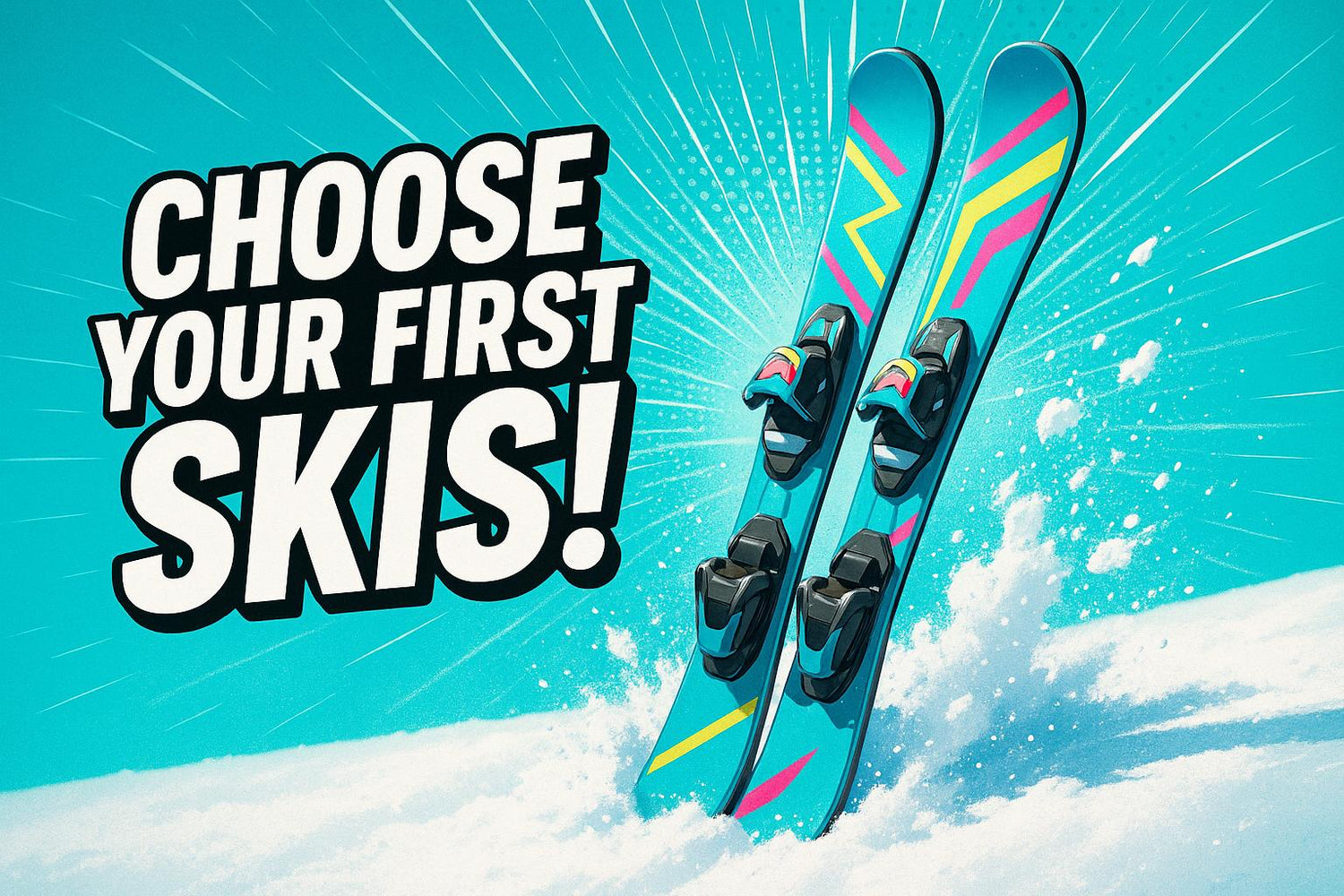
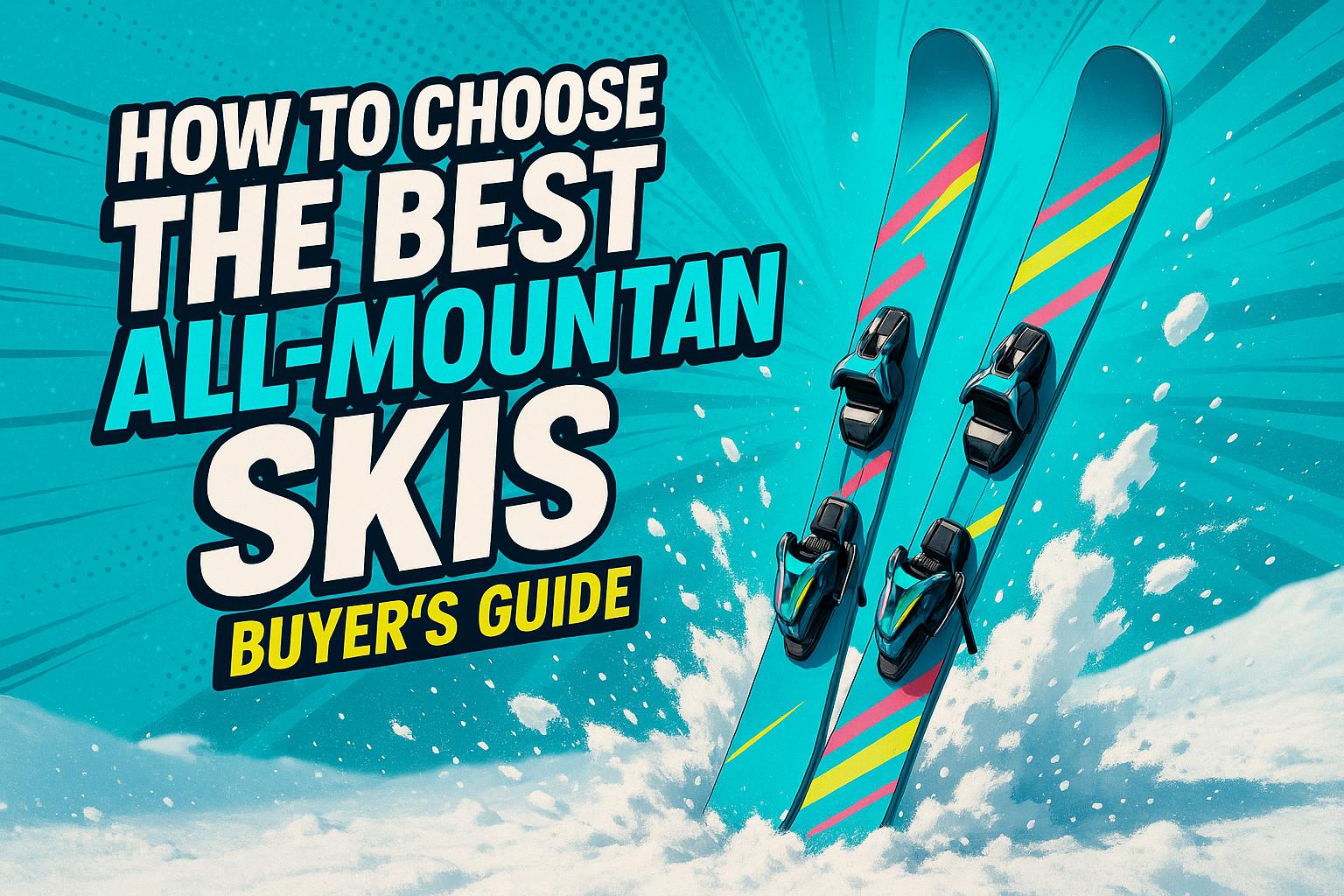
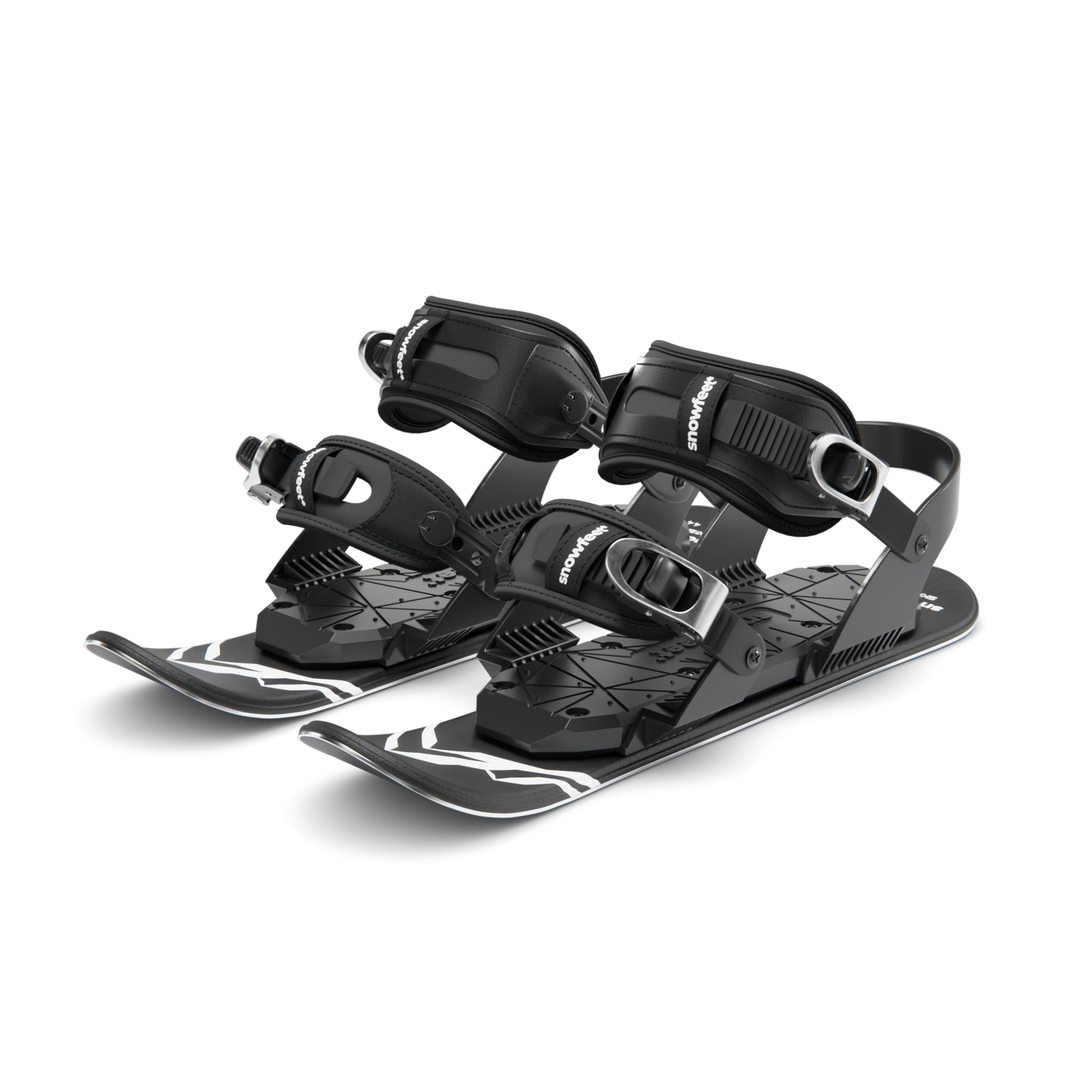

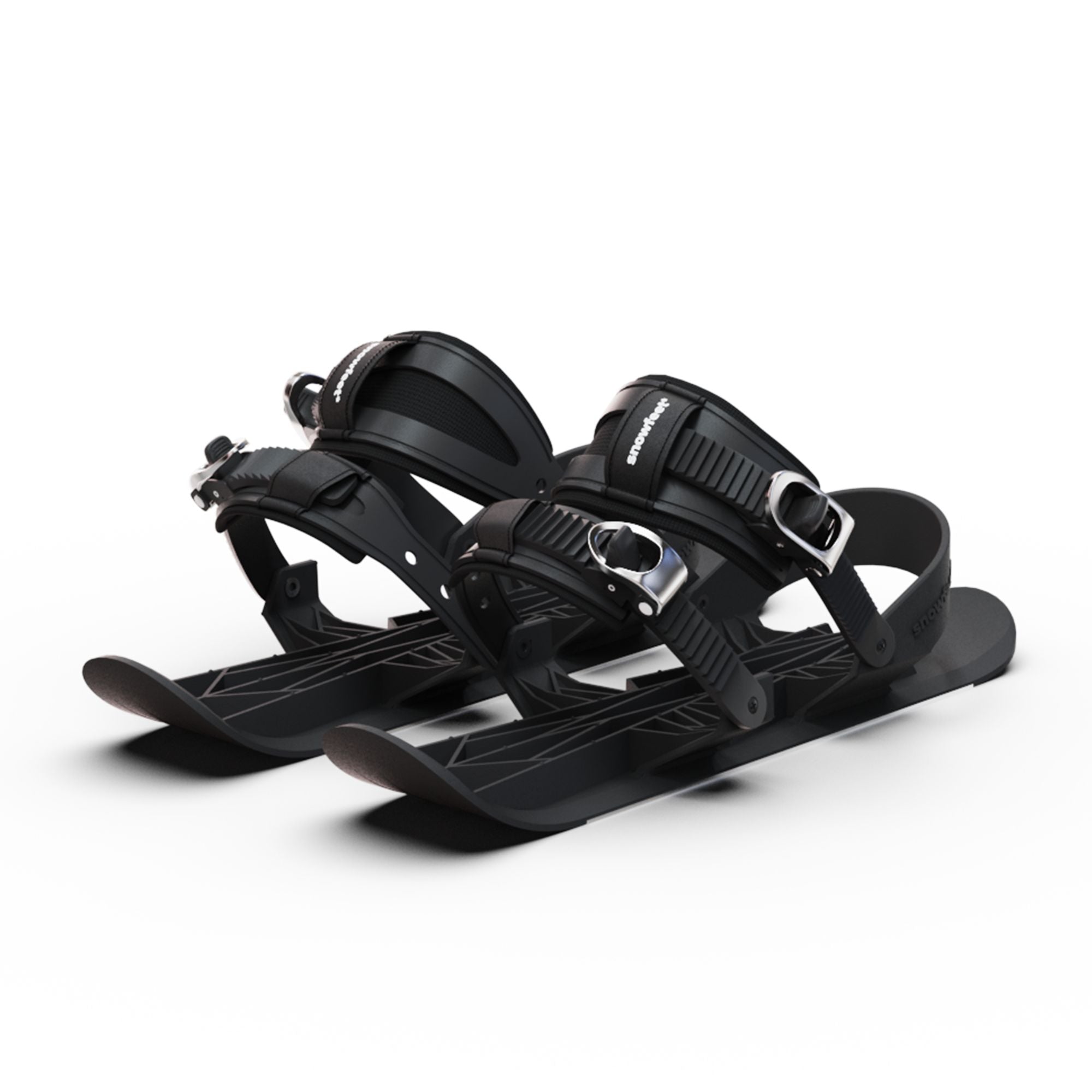
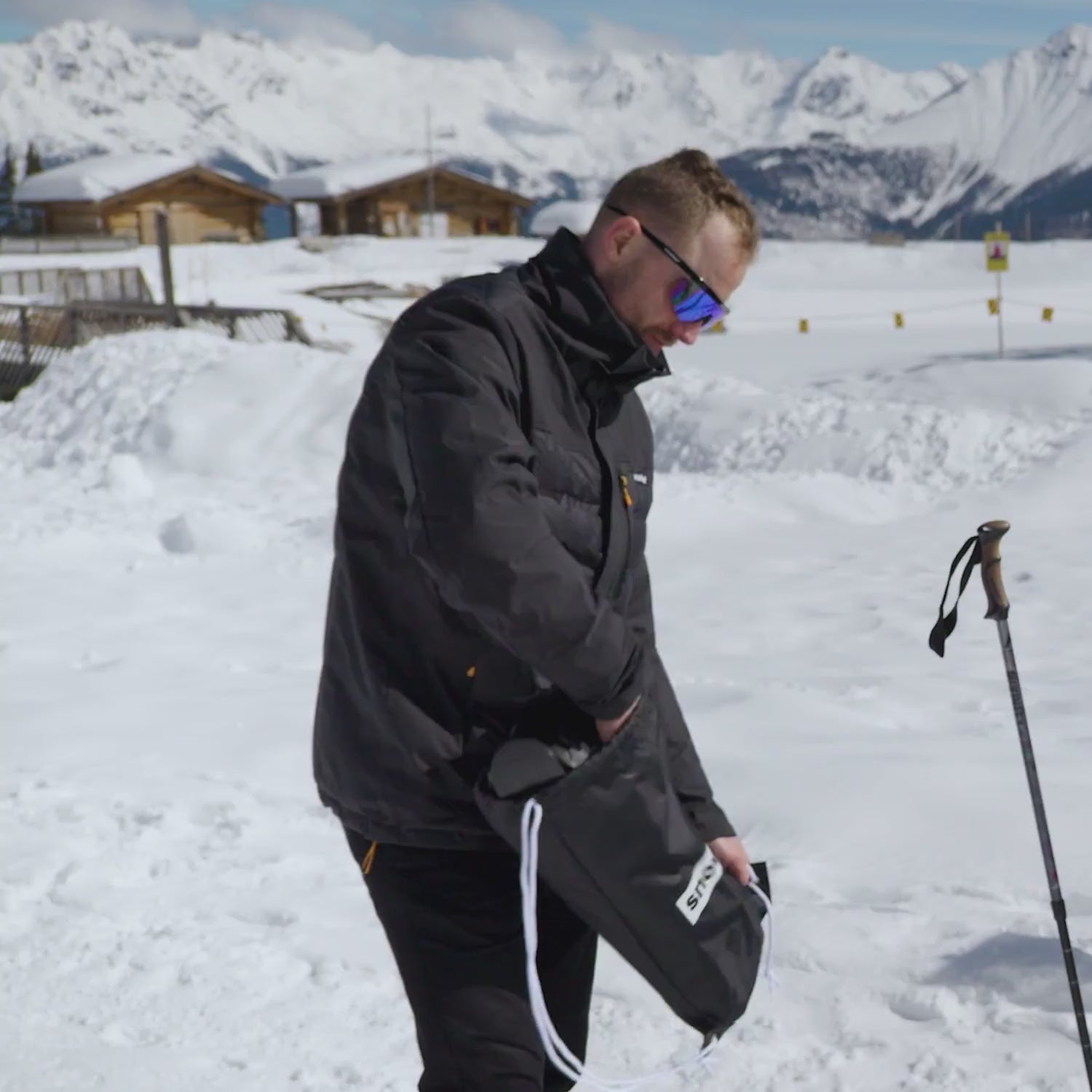
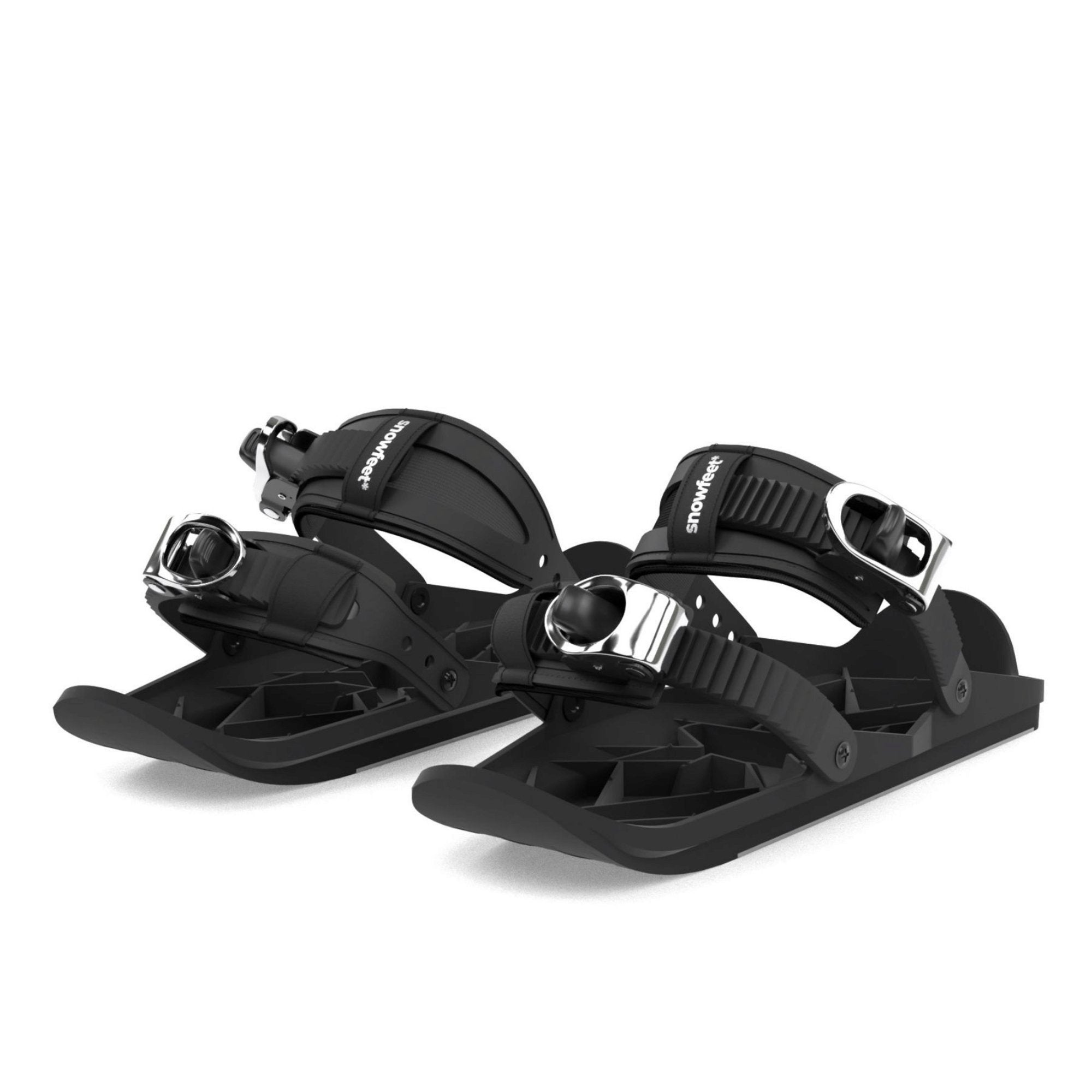
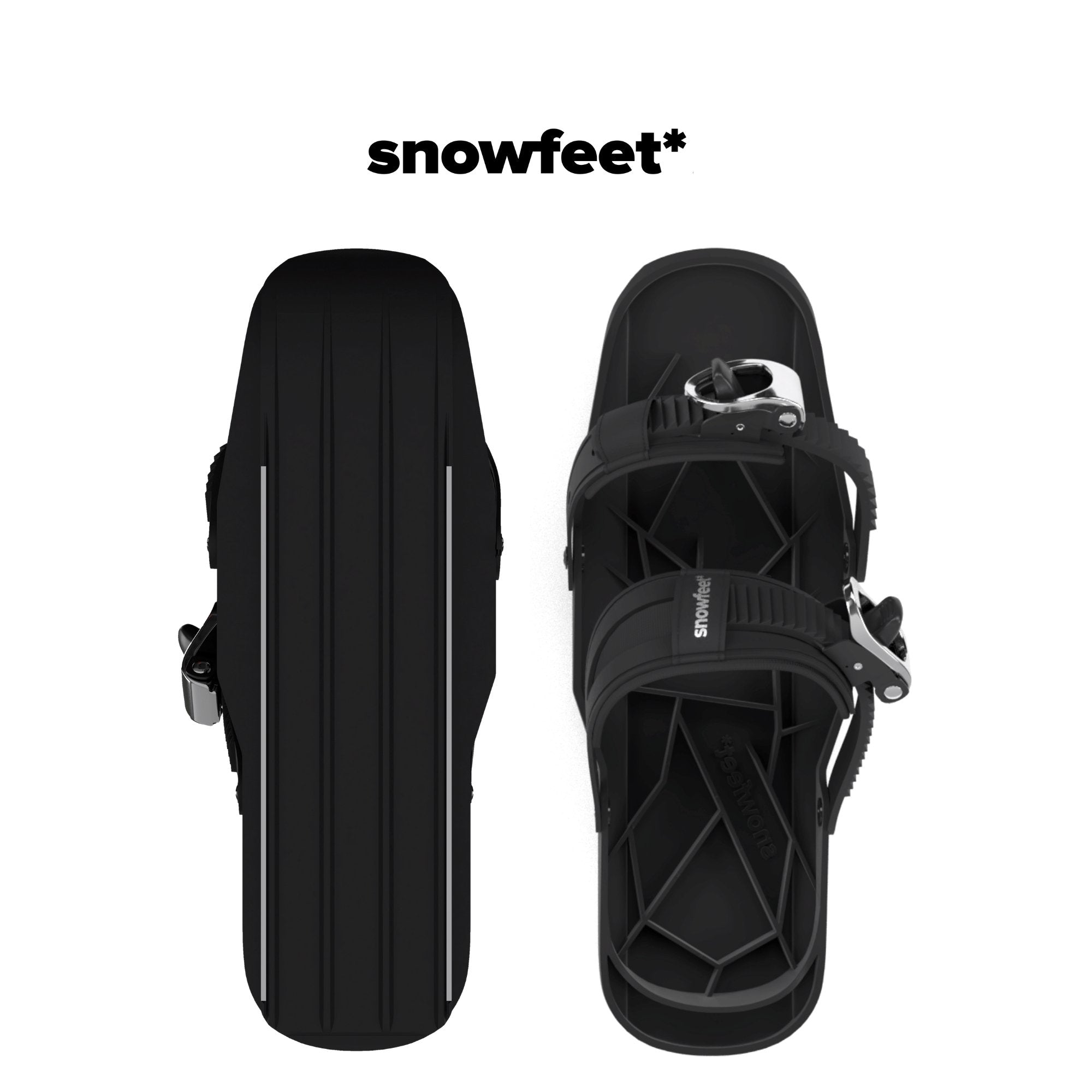
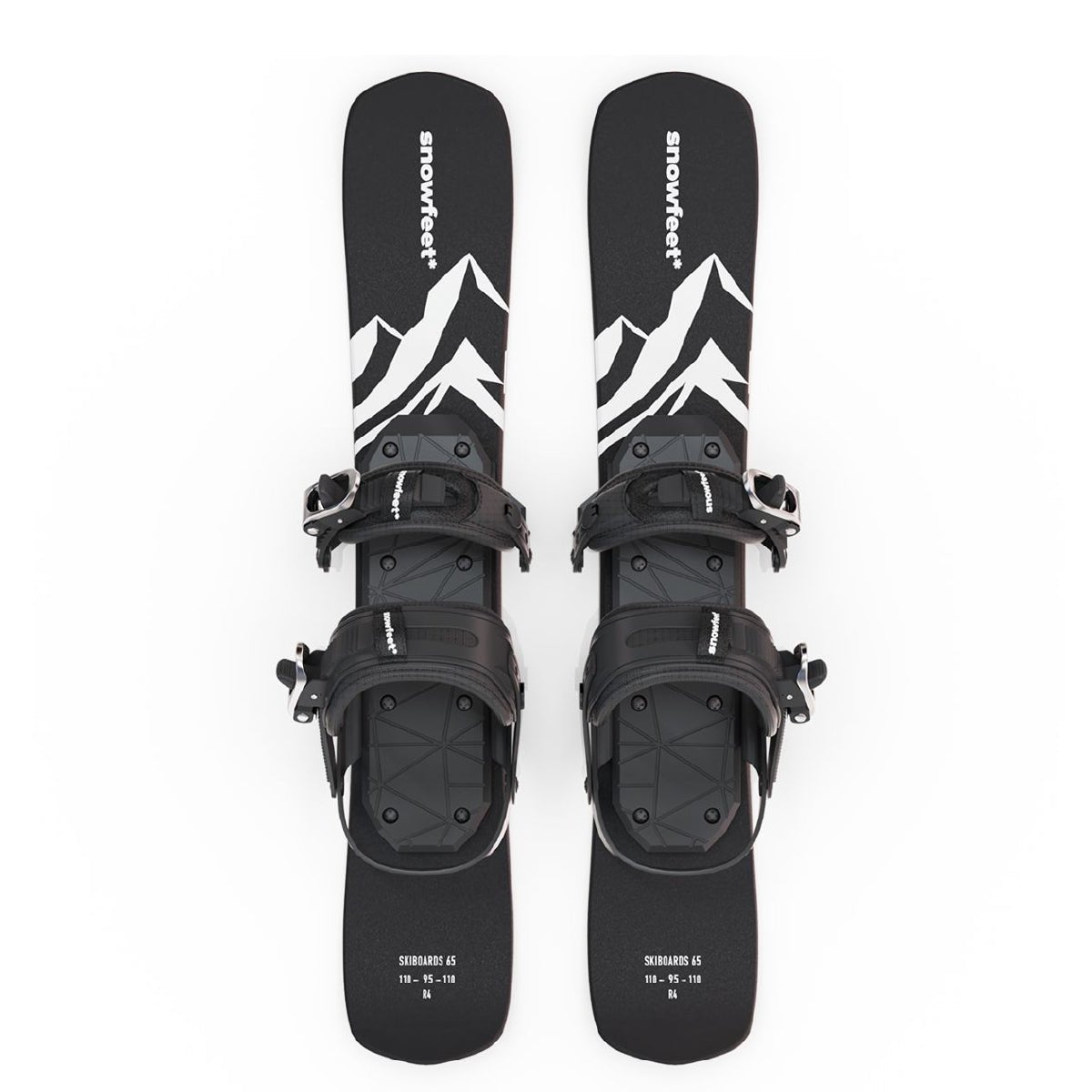
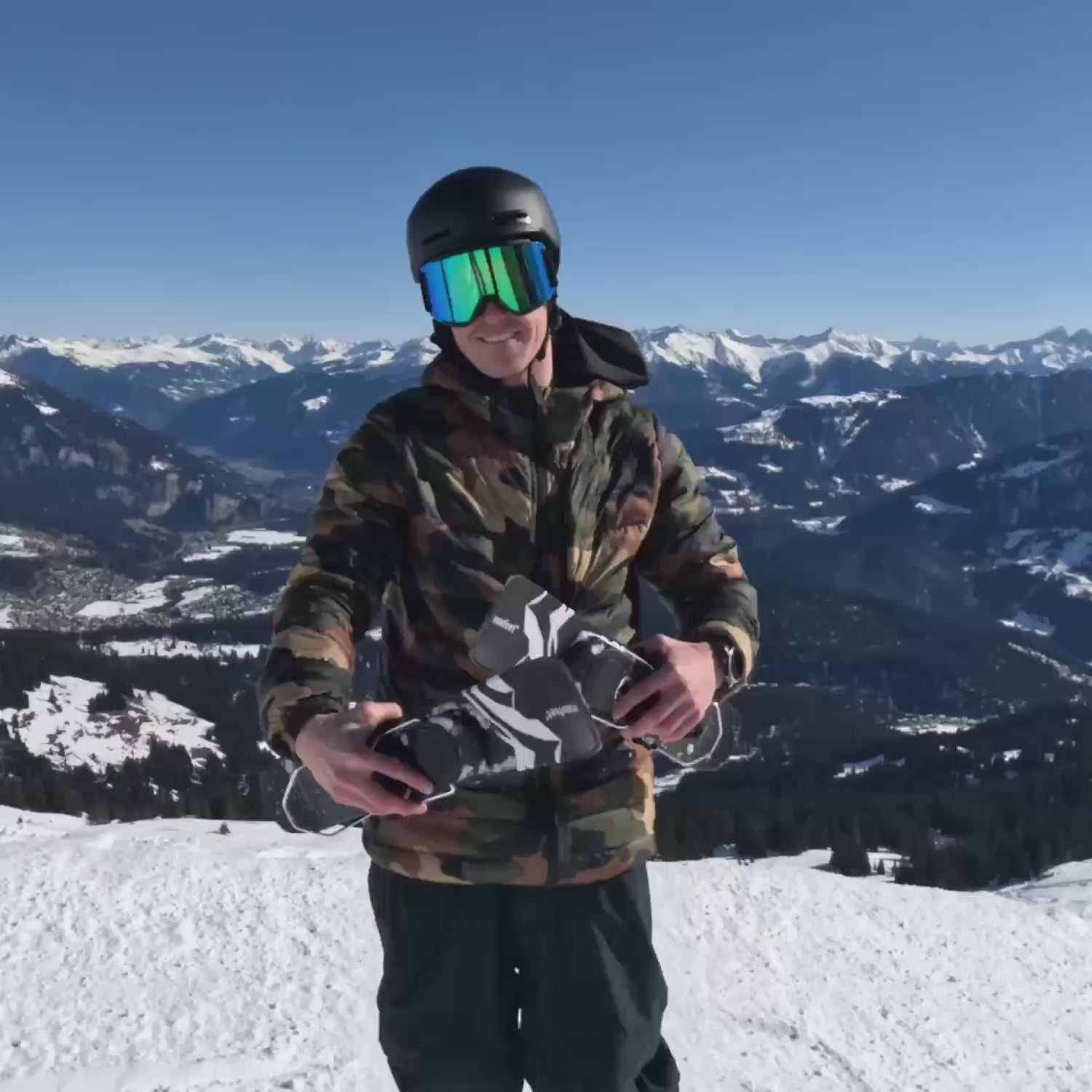
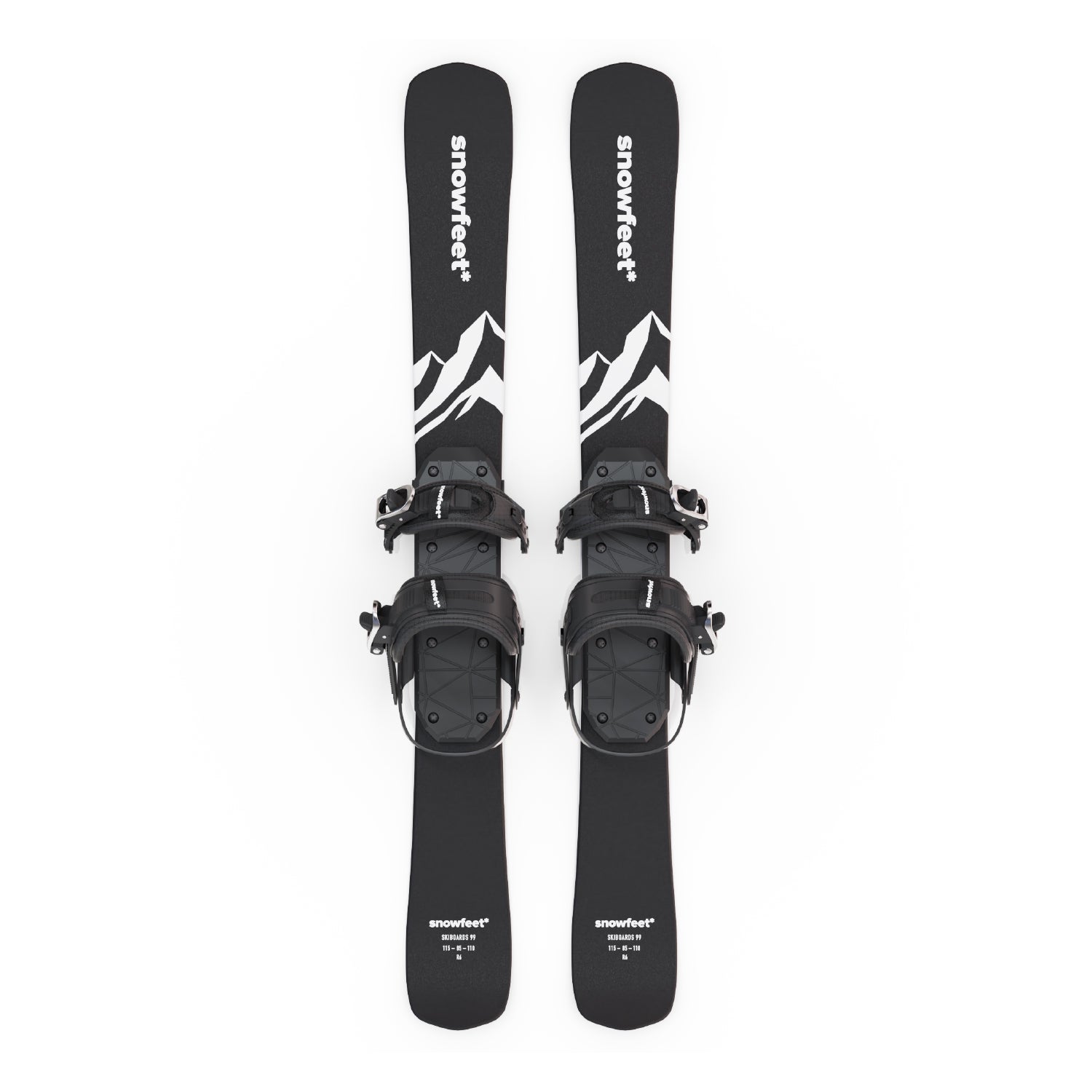
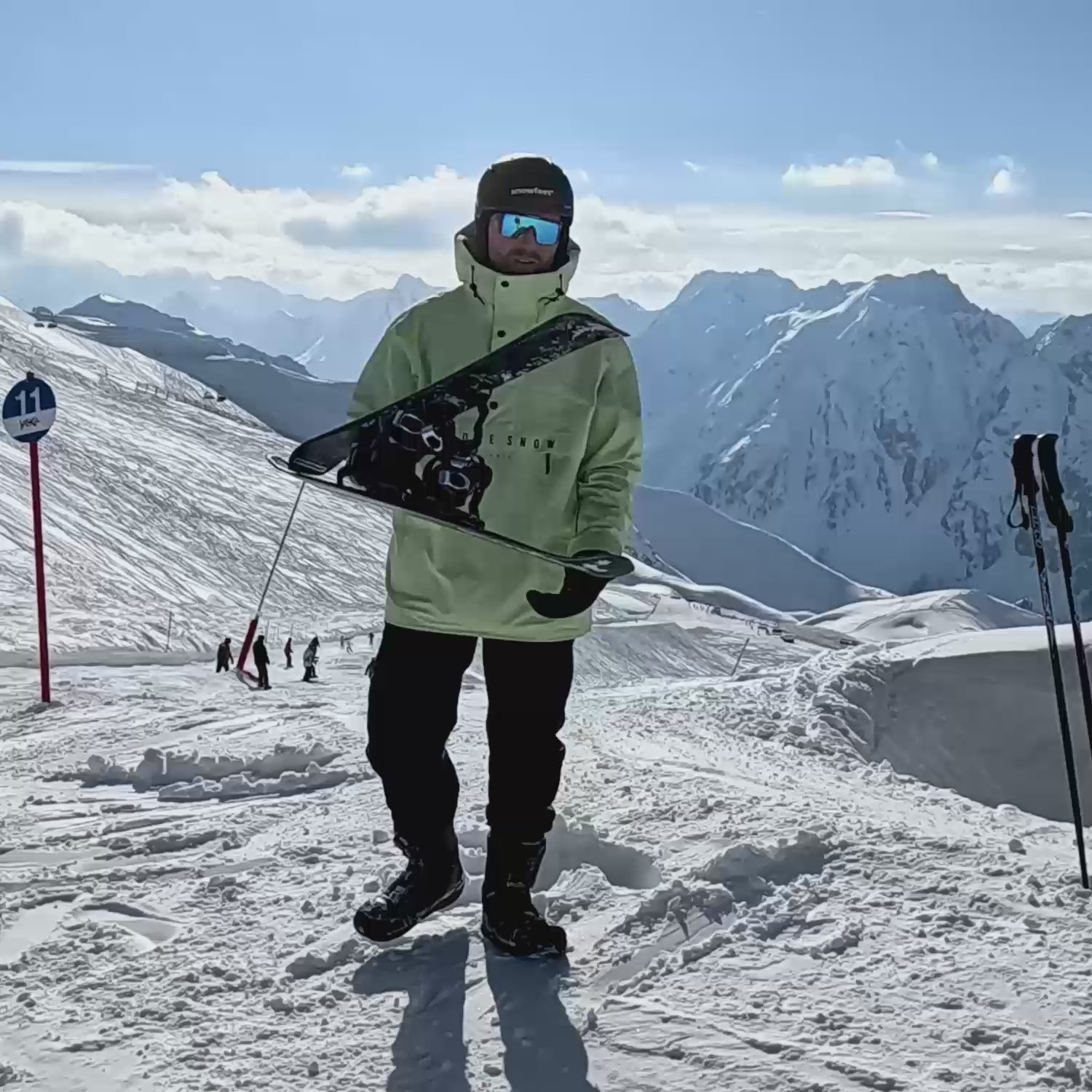
Laisser un commentaire
Ce site est protégé par hCaptcha, et la Politique de confidentialité et les Conditions de service de hCaptcha s’appliquent.